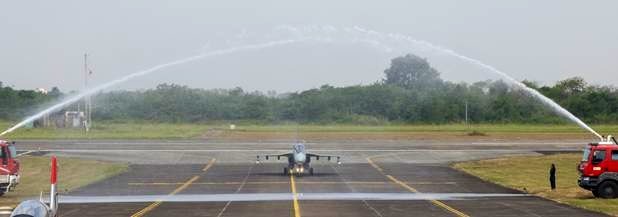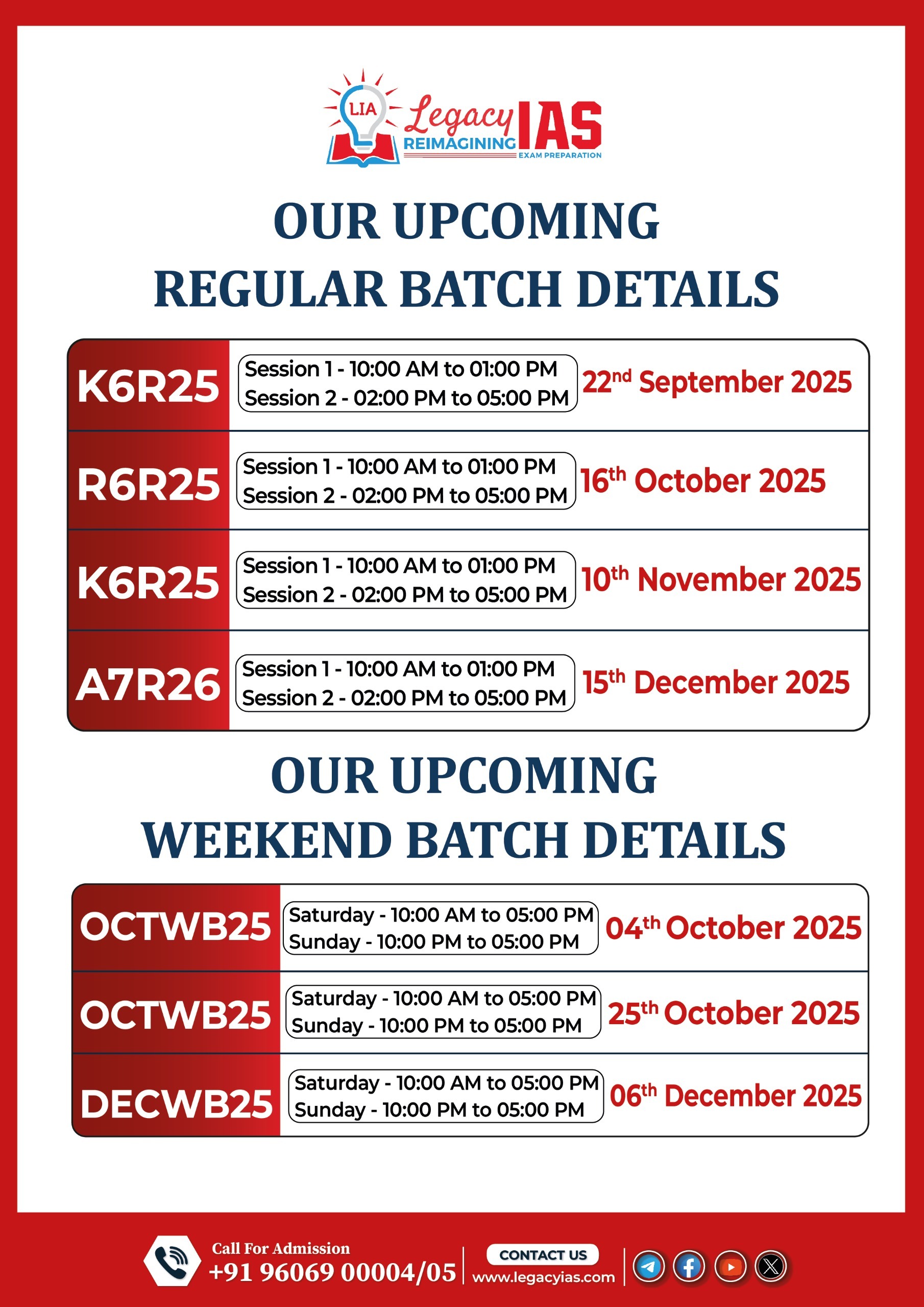Content
- Flight of self-reliance: Inauguration of 3rd Production Line of LCA Mk1A & 2nd Production Line of HTT-40 at HAL Nashik
Flight of self-reliance: Inauguration of 3rd Production Line of LCA Mk1A & 2nd Production Line of HTT-40 at HAL Nashik
Why in News ?
- Raksha Mantri Rajnath Singh inaugurated:
- 3rd Production Line of Light Combat Aircraft (LCA) Tejas Mk1A
- 2nd Production Line of Hindustan Turbo Trainer (HTT)-40
- At HAL Nashik, on 17 October 2025.
- First LCA Mk1A produced at Nashik was flagged off.
Relevance:
- GS 3 (Defence & Indigenisation):
- Illustrates India’s progress in self-reliance in defence manufacturing.
- Connect with initiatives like Aatmanirbhar Bharat, Make in India, and iDEX.
- GS 2 (Governance & Policy):
- Public–Private–Academia synergy in high-tech manufacturing.

Context
- Hindustan Aeronautics Limited (HAL) — a Navratna Defence PSU, India’s primary aerospace manufacturer.
- Objective: Boost domestic aircraft production capacity and reduce import dependence under Aatmanirbhar Bharat in Defence.
- Marks a shift from import-based to indigenous defence ecosystem.
Significance of LCA Mk1A
- LCA Tejas Mk1A: Upgraded variant of Tejas Mk1, developed by HAL and Aeronautical Development Agency (ADA) under DRDO.
- Key Features:
- Enhanced radar, electronic warfare, and air-to-air refuelling systems.
- Incorporates 75% indigenous content (target: 85%).
- Equipped with GE F404 engine (U.S. origin; Indian co-production to start under ToT).
- Cost-effective and agile — suited for replacing aging MiG-21s.
- Production capacity (post-expansion): 24 aircraft/year across 3 lines (Bengaluru + Nashik).
- Strategic Impact: Strengthens IAF’s light fighter fleet and promotes Make in India for export markets.
Significance of HTT-40
- HTT-40: Basic turboprop trainer aircraft for IAF pilot training, fully designed and developed by HAL.
- Role: Replaces imported Pilatus PC-7 MkII trainers.
- Key Specs:
- Indigenous engine, avionics, and ejection seat systems.
- Excellent handling, maintainability, and low life-cycle cost.
- Production capacity (new line): Estimated 20–24 aircraft/year.
- Symbolism: First fully indigenous basic trainer in India’s aviation history.
Defence Self-Reliance: Data & Achievements
- Import dependence in 2014: 65–70%.
- Indigenous production share (2025): ~65%.
- Defence production value:
- 2014–15: ₹46,429 crore
- 2024–25: ₹1.50 lakh crore (record high)
- Defence exports:
- 2014–15: < ₹1,000 crore
- 2024–25: ₹25,000 crore
- Target (2029): ₹50,000 crore exports; ₹3 lakh crore domestic manufacturing.
- Reflects India’s growing industrial base, export capability, and technological maturity.
Strategic and Technological Context
- Modern Warfare Relevance:
- Integration of AI, cyber warfare, drones, and next-gen aircraft.
- India’s aim: stay ahead of the curve in aerospace innovation.
- HAL’s expanded role:
- Beyond Tejas → Next-gen aircraft, unmanned systems, civil aviation.
- Joint MRO (Maintenance, Repair, Overhaul) facility for civil + military aviation → boosts job creation and skill ecosystem.
- Digital & Sustainable HAL Nashik:
- Paperless, green, and fully digitalised → aligns with Digital India & Green Defence.
Operational Context – “Operation Sindoor”
- HAL provided 24×7 maintenance and logistics support during Operation Sindoor (2025), ensuring:
- IAF operational readiness.
- Integration of BrahMos missile on Su-30 MKI, used to strike terrorist hideouts.
- Validates combat reliability of indigenously maintained systems.
HAL Nashik Division: Legacy and Capabilities
- Established: 1964; for MiG-21 license production.
- Production Record:
- 900+ aircraft produced.
- 1,900+ overhauled (MiG-21, MiG-27, Su-30 MKI).
- BrahMos Integration: Landmark in indigenous weapon-aircraft integration.
- Employment & Industry Base:
- ~1,000 jobs created.
- 40+ MSME partners developed around Nashik.
Broader Defence Industrial Policy Context
- Linked Policy Reforms:
- Defence Acquisition Procedure (DAP) 2020 → “Buy (Indian-IDDM)” prioritised.
- Positive Indigenisation Lists → 500+ items banned for import.
- Innovation for Defence Excellence (iDEX) → start-up participation.
- Defence Production & Export Promotion Policy (DPEPP) 2020.
- SRIJAN Portal → local vendor sourcing.
- Private Sector Integration: Growing participation of firms like Tata, L&T, Bharat Forge, and MSMEs in HAL’s supply chain.
Way Forward
- HAL’s future roadmap:
- Accelerate LCA Mk2, AMCA, and CATS Warrior (Unmanned Wingman) projects.
- Expand civil aircraft manufacturing and export-oriented defence production.
- Policy needs:
- Continued R&D investment, private sector integration, and export facilitation.
- Faster testing & certification ecosystems for indigenous systems.
Conclusion
- Core Message: The inauguration of new LCA Mk1A & HTT-40 production lines marks a decisive leap in India’s defence industrial capability.
- Transformational Outcome: India evolving from an import-dependent to a design-driven aerospace power.
- Strategic Symbolism: The “Flight of Self-Reliance” — HAL Nashik embodies Aatmanirbhar Bharat in action.



